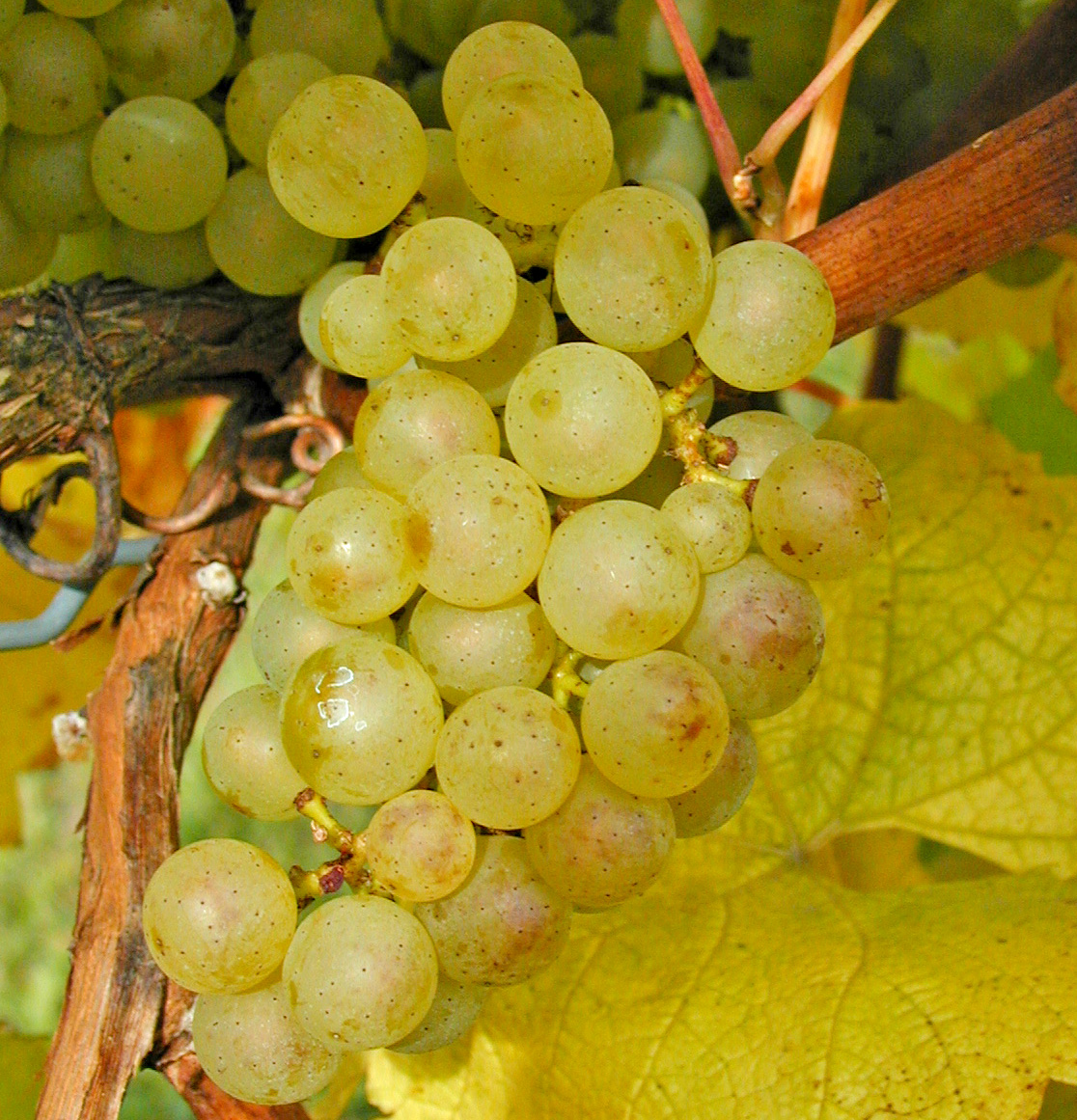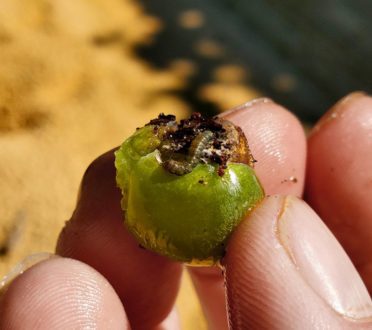Sep 10, 2020Berry moth control: Preparing for the 2020 grape harvest
Harvest 2020 is upon us, and early harvested vineyards will be limited in what pesticides can be applied due to preharvest intervals. Other vineyards still have some weeks remaining, providing more flexibility in what insecticide options are available while also having a longer time for pests to develop.
This is a good time to review where your insect control programs have worked well around the farm and where they may still need some inputs before harvest.
Check under the canopy for leafhoppers feeding on the leaves and clusters for berry moth larvae and damage. It is important to do this at the vineyard border and also inside the vineyard since much of this pest pressure can be restricted to the borders. Depending on the levels of infestation you find, you may be considering another insecticide application on just the borders or across whole vineyards. This article will review insecticide options, and their preharvest intervals, for help in finding a solution to prevent or reduce insect damage.
Our monitoring traps at high pressure vineyards have detected an increase in male grape berry moth activity over the past week, reflecting some increasing activity and highlighting that a fourth generation of this pest is likely in southwest Michigan this year. Michigan State University Enviroweather indicates egglaying by the fourth generation will increase in Berrien Springs, Michigan, starting Sept. 8 (based on a June 2 biofix of wild grape bloom) and starting Sept. 10 in Lawton, Michigan (based on a June 4 biofix of wild grape bloom), with similar timing across the rest of southwest Michigan.
To find fourth generation berry moth timing predictions specific to your area, view the grape berry moth model on Enviroweather. These timings are only an estimate and based on previous experience, berry moth is likely to be active from now until harvest, with its activity tailing off as the nights gets cooler.


When selecting insecticide options in September, keep in mind their longevity of activity, the preharvest interval, plus their activity on berry moth and on vinegar flies and other late-season insect pests. For vineyards being harvested soon, effective products with preharvest intervals at or under two weeks include the diamides Altacor (14 days), Delegate (seven days) or Verdepryn (seven days). These will provide 10-14 days activity on berry moth. Tourismo (seven days) is a newer product that is also effective on berry moth and is a pre-mix of growth regulators that disrupts their molting.
The following biological insecticides have good efficacy on berry moth but have shorter activity, so they work best when applied on a weekly schedule (all with zero-day preharvest intervals): Grandevo, Venerate, SpearLep and the Bt products including Javelin and Dipel. These insecticides will help conserve biological control agents since they are relatively selective. The pyrethroids Mustang Maxx (one day) and Baythroid (three days) also have short preharvest intervals allowing flexibility near harvest. They provide quick knockdown of insects and last for seven to 10 days.
For vineyards with a longer time before harvest, Imidan has a 14-day re-entry interval, and at the higher 2.125-pound rate, the preharvest interval is also 14 days. For rates of 1.3 pounds or lower, fruit can be machine harvested after seven days. This broad-spectrum insecticide is active for 10-14 days on berry moth and should be applied in water buffered to a pH of around 5.
An option for vineyards with at least four weeks until harvest is the long-lasting growth regulator Intrepid (30 days) or Intrepid Edge that has the active ingredients of Intrepid and Delegate combined together (30 days). These are good options for controlling berry moths over a long period of time. The pyrethroids Danitol (21 days) or Brigade (30 days) would also be options for the later-harvested vineyards, but these are shorter-lived insecticides that would not cover the period until harvest.
As always with targeting berry moth, focus getting sprays into the canopy and onto the clusters using suitable sprayer adjustments and sufficient water. Using a spreader-sticker can also help reach those nooks and crannies where berry moth likes to hide. Waiting until after the upcoming rainfall is advised for most insecticides since they will be at risk of washing off. However, Intrepid is the most rainfast of the options registered in grape if you have the time until harvest and want to ensure clusters are protected.
– Rufus Isaacs and Jacquelyn Perkins, Michigan State University Department of Entomology, and Michael Reinke, Michigan State University Extension
Photo at top: Grape berry moth larva in Niagara. Photo: Mike Reinke, MSU Extension















